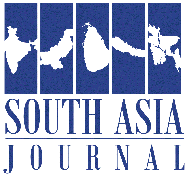
Brandon J. Weichert
This is a good deal for both sides; it will enhance China’s weapons export market and give Iran considerably new capabilities, as its air force was in shambles even before the war.
Shortly after the US military’s weekend airstrikes against three Iranian nuclear weapons facilities—Fordow, Natanz, and Isfahan—a group of top Iranian military leaders flew to China. While there, Iran’s representatives reportedly eyed several advanced Chinese military weapons, such as the J-10C fourth-generation warplane.
That’s because after the American airstrikes—as well as the multiple other Israeli incursions over the last 12 days—Tehran must restore its badly degraded air defenses, as well as its ability to project power in the strategic air domain.
Iran Wants Russian Planes—but the Kremlin Isn’t Delivering
Put simply, Iran’s existing fleet of warplanes was no match for the American and Israeli onslaught over the course of the recent war. In fact, when the US Air Force launched its airstrikes as part of “Operation Midnight Hammer,” no Iranian warplanes even tried to intercept the 129 US warplanes that entered Iranian airspace. To be fair, Iran’s air force was no match for the Western air forces of Israel and America—and much of Iran’s air capability had already been degraded in the days before the Americans joined the war.
Now that the conflict is over and a ceasefire between the warring parties is holding, Iran is scrambling to restore its degraded defenses. To head off a similar incursion in the future, Tehran is looking to acquire modern air capabilities. While the Iranians had been contracted to purchase Russian warplanes—notably the Su-35—Moscow has been dragging its heels on delivering them, preferring to use them instead in Ukraine. But the recent war emphasizes that Tehran can wait no longer. If the Russians, ostensibly Iran’s geopolitical benefactor, cannot or will not deliver the planes, then Iranian defense purchasers will look to Beijing instead.
China’s Planes Are Exactly What Tehran Needs
Notably, Chinese systems such as the J-10C fourth-generation warplane have received a sudden boost in recent months. In May of this year, India and Pakistan fought a four-day-long war. In the opening hours of that conflict, the Pakistanis scored a series of surprising and remarkable wins against an Indian military that, on paper, was far superior to the Pakistani Armed Forces. Pakistan’s effectiveness came in part because of its use of Chinese-made warplanes like the J-10C, which succeeded in shooting down at least one French-built 4.5-generation Dassault Rafale fighter..
Since Russia will seemingly not make good on its agreement with Iran to supply warplanes, Tehran will turn to China instead. This is a good deal for both sides; it will enhance China’s weapons export market and give Iran considerably new capabilities, as its air force was in shambles even before the war. Should Iran purchase these Chinese systems, it will supercharge its military and make it into a far more efficient fighting force. Indeed, it would appear that since the Israeli strikes, the Iranians are embarking on a true modernization push to make their military more competitive with those of the region.
The article appeared in the nationalinterest
